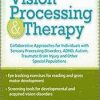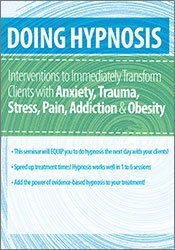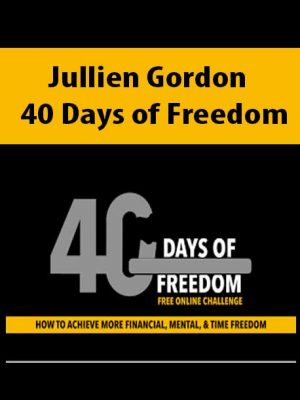C. Alexander and Annellen M. Simpkins – Doing Hypnosis: Interventions to Immediately Transform Clients with Anxiety, Trauma, Stress, Pain, Addiction, & Obesity
$200.00 Original price was: $200.00.$56.00Current price is: $56.00.
Proof of item:
- This seminar will EQUIP you to do hypnosis the next day with your clients!
- Speed up treatment times! Hypnosis works well in 1 to 6 sessions
- Add the power of evidence-based hypnosis to your treatment modalities for pain, anxiety, stress, trauma, weight and addiction
As a clinician, it can be frustrating the number of sessions needed to see results. Too many of our clients spiral out of control over simple every day stress because they don’t have in the moment coping skills. Are you giving them skills they can use in the moment?
We remember seeing Halle, a mom who had experienced complications, pain, and trauma with her first birth. It took her 10 years to consider having another child. Sitting in our office three months pregnant, her baby’s health was dependent upon her ability to handle the stress and trauma of the first birth. She would deliver in six months and she needed coping skills today. If you see Halle tomorrow, do you have an approach that can provide her the skills she needs to cope tomorrow?
Watch our recording and learn the hypnosis techniques we used that transformed Halle’s life and made her fears vanish.
This workshop teaches you how to go in and out of the hypnotic state, use direct and indirect forms of suggestion, and employ a four-step method to alter negative self-suggestion. You will experience varied hypnotic phenomena and learn helpful, powerful interventions for anxiety, stress, trauma, substance abuse, pain, sleep and weight.
If you are new to hypnosis, you will gain the skills you need to start adding hypnosis into your practice. Or, if you are an experienced hypnotherapist, you will learn innovative methods to enhance your work. Through the process, you will gain hypnotic skills you can use for enriching your own personal development.
We have spent more than 40 years in the research, neuroscience, and the practice of hypnosis, and have used hypnosis ourselves many times as a personal resource for pain, stress, and accomplishing seemingly impossible tasks. In our own research comparing indirect hypnotherapy to traditional awareness-based therapy, we found subjects working unconsciously in hypnosis, effectively overcame target complaints.
- Recognize the intelligent unconscious brain pathways and how hypnosis accesses them for therapy.
- Find out how hypnosis changes the brain.
- Evaluate about direct and indirect suggestion, practice each form, and learn a 4-step method to apply them therapeutically.
- Participate yourself with inducing and coming out of hypnotic trance.
- Practice key trance phenomena to deepen hypnosis using sensory, motor, time and visual alterations.
- Apply protocols for psychological problems to pain, anxiety, trauma, addiction, stress, sleep problems, psychosomatic disorders and eating disorders.
Get C. Alexander and Annellen M. Simpkins of author C. Alexander & Annellen M. Simpkins
Hypnosis: Working with the Unconscious
- Paradigm shift on the unconscious
- East-West correlation
- Neuroscience research support
- Research for working unconsciously in therapy
- Advantages of hypnosis for therapy
How Hypnosis Affects the Brain
- Unconscious intelligence
- Hypnosis dual effect
- Hypnosis and executive control
- Default mode network
Developing Your Hypnotic Tools
- Absorption
- Focus
- Openness
- Mind-body Link
- Suggestion
- Direct
- Indirect
- Post-hypnotic
- 4-step method to overcome negative self-suggestions
Trancework
- Getting to know your natural unconscious tendencies
- Going in and out of hypnosis
- Deepening with hypnotic phenomena
Utilizing Hypnosis for Therapy: Research, Cases, Protocols & Experiential Exercises
- Anxiety, stress and trauma
- Substance abuse
- Pain
- Sleep
- Eating disorders
- Psychosomatic disorders
Principles to Guide your Hypnotherapy
Get C. Alexander and Annellen M. Simpkins of author C. Alexander & Annellen M. Simpkins
1 review for C. Alexander and Annellen M. Simpkins – Doing Hypnosis: Interventions to Immediately Transform Clients with Anxiety, Trauma, Stress, Pain, Addiction, & Obesity
| 5 star | 100 | 100% |
| 4 star | 0% | |
| 3 star | 0% | |
| 2 star | 0% | |
| 1 star | 0% |
Sorry, no reviews match your current selections
Q & A
Related products
Personal Development
Move into Life: The Nine Essentials for Lifelong Vitality – Anat Baniel
Personal Development
Personal Development
Personal Development
Cameron Blas – Filming And Editing Mastery With Final Cut Pro X
Personal Development
Personal Development
Personal Development
Personal Development














Free fast shipping, delightedly unexpected reduced price offer accepted, thank u | C. Alexander and Annellen M. Simpkins – Doing Hypnosis: Interventions to Immediately Transform Clients with Anxiety, Trauma, Stress, Pain, Addiction, & Obesity